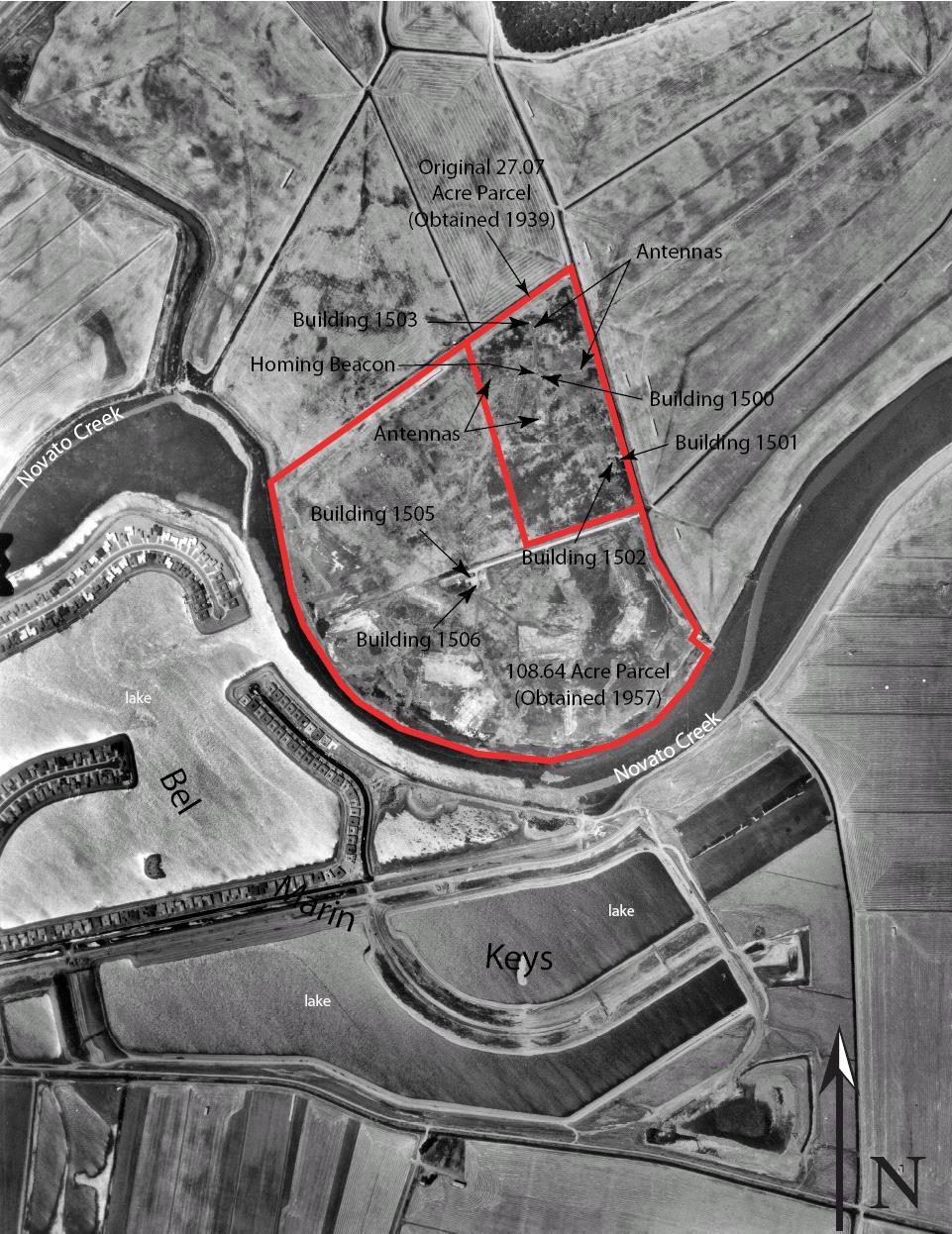

Although physically separated from Hamilton Field (which became Hamilton AFB in 1947), the operational histories of these two installations are so intertwined, that the history of the former Black Point Communication Annex cannot be told without the integration of Hamilton Field's history as well.
In the late 1930s, Hamilton Field was the Air Corps' premier airfield in Northern California, if not all of the western United States. It was the home of large numbers of pursuit aircraft charged with defending the San Francisco Bay area and the rest of Northern California. Advances in long range radio communications during this time were such that in order for the commanders at Hamilton Field to talk by radio to other airfields and aircraft operating at great distances, large antenna arrays were required. It was soon realized that Hamilton Field would have to acquire additional land to support such arrays.
In 1939, an antenna site was established at Black Point in Marin County, California, located four miles to the north of Hamilton Field. At that time, Hamilton Field was one of the largest and most active in the Air Corps (totaling over 4,000 officers and enlisted men) and was the home of the 45th Air Base Group; the 20th Pursuit Group (Fighter); the 35th Pursuit Group (Interceptor); the 82nd Observation Squadron; as well as Weather and Signal units, most of whom utilized radio communications. At that time the site was named the Hamilton Field Radio Range Station.
With the attack on Pearl Harbor, the Fourth Air Force of the Air Corps (was soon established at Hamilton Field. The Fourth Air Force commanded all air defense and training airfields and units west of the Rocky Mountains. In late 1942, the Fourth Air Force assumed command and control over the chain of radar stations that stretched along the coast from Canada to Mexico. As such, the importance of the communications facility at Black Point grew as these missions expanded.
By the 1950s, mission requirements and technology had progressed such that additional acreage was required for even larger antenna arrays. In 1957, additional acrage of previously leased land around the Black Point Communications Annex was acquired by condemnation for expansion of the antenna farm.
On 1 April 1966, in addition to reactivating the Fourth Air Force, U.S. Air Force, the Western North American Air Defense Command (NORAD) region was activated at Hamilton AFB. This headquarters was not only responsible for the aerospace defense of 11 western states, but also controlled defense forces in two western Canadian provinces. NORAD was a joint U.S. Air Force/Royal Canadian Air Force (after 1969, Canadian Forces) organization. The new Western NORAD Region command combined the 25th, 26th and 27th NORAD Divisions, which were headquartered at McChord AFB Washington, Corvallis Oregon, and Luke AFB Arizona, respectively. Again, west coast radar stations were under the command of headquarters at Hamilton AFB. Data was fed to Hamilton AFB via the Semi-Automatic Ground Environment (SAGE) system.
Other U.S. Air Force commands at Hamilton AFB are the Western Communications Region, the Western Aerospace Rescue and Recovery Center, the Sixth Air Force Reserve Region, and the 349th Troop Carrier Wing. In addition, there are small units of the Military Airlift Command, the Tactical Air Command, and the USAF Auditor Generals Office. All of these units and activities impacted the amount of signal traffic that was processed through the Black Point Communications Annex.
In 1952 Hamilton AFB and Black Point Communication Annex were declared "permanent" USAF installations. Nevertheless, by 1973, their importance had diminished, and they were finally placed in a caretaker status on 11 January 1976.
In 1984, the General Services Administration (GSA) sold the former Black Point Communication Annex to the State of California.
|
|
|
|
| 1500 | Electrical Power Station | Concrete Block |
| 1501 | Transmitter Building and Control Room | Concrete Block |
| 1502 | Generator Room | Wood Frame on Concrete |
| 1503 | Generator Room/Warehouse | Unknown |
| 1504 | Unknown | Prefabricated Steel |
| 1505 | Transmitter Building and Control Room | Concrete Block |
| 1506 | Generator Room | Concrete Block |
| 1512 | Air Conditioning Unit | Corrugated Steel |
Extract, War Department Inventory of Owned, Sponsored and Leased Facilities, December 1945